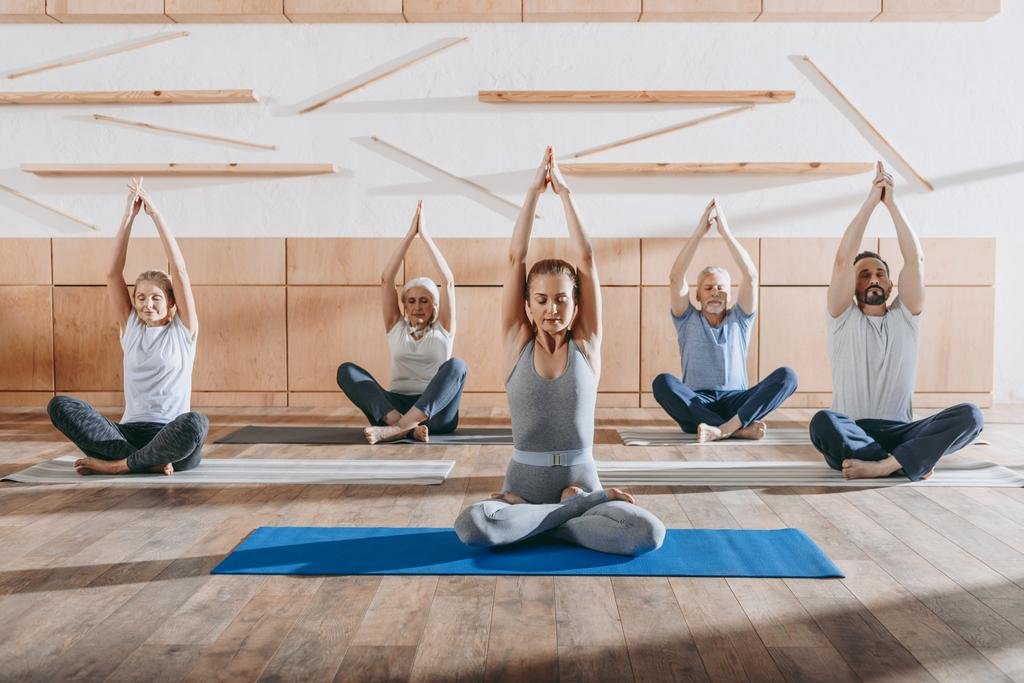Blog
Exploring Mindful Movement Different Yoga Styles at Retreats

Introduction
Many of us are seeking ways to unwind, rejuvenate, and reconnect with ourselves. One increasingly popular option is attending a yoga retreat, where you can immerse yourself in the practice of mindful movement and explore different yoga styles. Yoga retreats offer a unique opportunity to deepen your practice, learn from experienced teachers, and connect with like-minded individuals in a serene environment.
We’ll delve into the world of yoga retreats and explore the various styles of yoga you might encounter during your stay. Whether you’re a beginner or an experienced practitioner, understanding the different types of yoga can help you choose a retreat that aligns with your goals and preferences. Let’s embark on this journey of mindful movement together!
The Benefits of Attending a Yoga Retreat

Before we explore the different yoga styles, let’s discuss why attending a yoga retreat can be so beneficial. Here are some of the key advantages:
- Deepening Your Practice: At a retreat, you’ll have the opportunity to practice yoga multiple times a day, allowing you to immerse yourself in the practice and make significant progress in a short period.
- Learning from Experienced Teachers: Yoga retreats often feature skilled and knowledgeable teachers who can offer personalized guidance and help you refine your technique.
- Disconnecting from Distractions: Retreats provide a chance to unplug from technology and the demands of daily life, allowing you to focus on your practice and inner growth.
- Connecting with Like-Minded Individuals: Yoga retreats attract people from all walks of life who share a common interest in mindful movement and personal development. This creates a supportive and uplifting community atmosphere.
- Exploring Beautiful Locations: Many retreats are held in stunning natural settings, such as mountains, beaches, or forests, providing a serene backdrop for your practice.
Now that we’ve covered the benefits let’s explore some of the most popular yoga styles you might encounter at a retreat.
Hatha Yoga
Hatha yoga is a traditional style that forms the foundation for many other types of yoga. It focuses on physical postures (asanas), breathing techniques (pranayama), and meditation. In a Hatha yoga class, you can expect a slower pace, with emphasis on proper alignment and breath awareness.
Benefits of Hatha Yoga
- Improves flexibility and strength
- Reduces stress and promotes relaxation
- Enhances body awareness and mind-body connection
- Suitable for beginners and practitioners of all levels
Vinyasa Yoga
Vinyasa yoga, also known as flow yoga, is a dynamic style that links movement with breath. In a Vinyasa class, you’ll move through a series of postures in a fluid, continuous sequence. The pace can vary from gentle to vigorous, depending on the teacher and level of the class.
Benefits of Vinyasa Yoga
- Builds cardiovascular endurance and stamina
- Develops strength and flexibility
- Enhances focus and concentration
- Promotes a meditative state through synchronized breath and movement
Yin Yoga
Yin yoga is a slow-paced style that involves holding passive poses for several minutes at a time. The practice targets the connective tissues (ligaments, joints, bones, and deep fascia) rather than the muscles. Yin yoga is often practiced in a seated or reclined position, using props for support.
Benefits of Yin Yoga
- Increases flexibility and joint mobility
- Reduces stress and calms the mind
- Balances the nervous system
- Complements more active yoga styles or physical activities
Restorative Yoga
Restorative yoga is a gentle, relaxing style that uses props (such as blankets, bolsters, and blocks) to support the body in passive poses. The goal is to promote deep relaxation and release tension. Restorative classes often include only a handful of poses, held for extended periods.
Benefits of Restorative Yoga
- Promotes deep relaxation and stress relief
- Calms the nervous system
- Enhances the body’s natural healing processes
- Suitable for all levels, including those recovering from injury or illness
Ashtanga Yoga
Ashtanga yoga is a structured, physically demanding style that follows a set sequence of postures. The practice is divided into six series, each progressing in difficulty. Ashtanga is often taught in a “Mysore” style, where students practice at their own pace under the guidance of a teacher.
Benefits of Ashtanga Yoga
- Builds strength, flexibility, and stamina
- Develops discipline and focus
- Promotes a meditative state through synchronized breath and movement
- Offers a consistent, progressive practice
Kundalini Yoga
Kundalini yoga is a spiritual style that aims to awaken the dormant energy at the base of the spine (known as the kundalini). Classes typically include dynamic breathing techniques, chanting, meditation, and physical postures. Kundalini yoga is known for its energizing and transformative effects.
Benefits of Kundalini Yoga
- Increases energy and vitality
- Strengthens the nervous system
- Enhances self-awareness and spiritual growth
- Balances the glandular system and improves overall well-being
Comparing Yoga Styles
To help you better understand the differences between these yoga styles, let’s compare them based on key factors:
| Yoga Style | Physical Intensity | Pace | Primary Focus |
|---|---|---|---|
| Hatha | Low to Moderate | Slow | Alignment & Breath |
| Vinyasa | Moderate to High | Fluid | Synchronized Movement |
| Yin | Low | Slow | Connective Tissues |
| Restorative | Low | Slow | Relaxation & Healing |
| Ashtanga | High | Fixed | Strength & Stamina |
| Kundalini | Moderate | Varied | Spiritual Awakening |
Choosing the Right Yoga Retreat for You

Now that you have a better understanding of the different yoga styles, how do you choose the right retreat for your needs and preferences? Here are some factors to consider:
- Your Experience Level: If you’re new to yoga, look for retreats that cater to beginners or offer multi-level classes. More experienced practitioners may prefer retreats that focus on advancing their practice.
- Your Goals: Consider what you hope to gain from your retreat experience. Are you looking to deepen your physical practice, find relaxation and stress relief, or explore the spiritual aspects of yoga?
- Length of Stay: Retreats can range from a weekend getaway to a month-long immersion. Choose a duration that fits your schedule and allows you to fully engage in the experience.
- Location: Think about the type of environment that would best support your practice and well-being. Do you prefer a secluded mountain retreat, a tropical beach resort, or a countryside escape?
- Teacher and Style: Research the teachers leading the retreat and their areas of expertise. Make sure their teaching style and approach align with your preferences.
- Group Size: Consider whether you prefer a more intimate retreat with personalized attention or a larger group dynamic with diverse energy.
| Factor | Consideration |
|---|---|
| Experience Level | Beginner-friendly or advanced practices |
| Goals | Physical, mental, or spiritual focus |
| Length of Stay | Weekend, week-long, or extended immersion |
| Location | Natural setting that supports your well-being |
| Teacher & Style | Alignment with your preferences and goals |
| Group Size | Intimate and personalized or larger group dynamic |
By reflecting on these factors, you can narrow down your options and find a retreat that resonates with your unique needs and aspirations.
Preparing for Your Yoga Retreat

Once you’ve chosen your retreat, it’s time to start preparing for your transformative journey. Here are some tips to help you make the most of your experience:
- Set an Intention: Take some time to reflect on what you hope to gain from your retreat. Setting a clear intention can help you stay focused and open to the experiences that unfold.
- Pack Mindfully: Check with your retreat center for a recommended packing list. In addition to comfortable clothing for yoga practice, consider bringing a journal, inspiring reading material, and any personal items that bring you comfort.
- Unplug and Disconnect: Many retreats encourage a digital detox to help you fully immerse yourself in the experience. Consider leaving your devices at home or limiting their use during your stay.
- Embrace Beginner’s Mind: Approach your retreat with a sense of curiosity and openness. Be willing to try new things, step outside your comfort zone, and learn from your teachers and fellow practitioners.
- Practice Self-Care: Remember that a retreat is an opportunity for self-nurturing and rejuvenation. Listen to your body, honor your needs, and give yourself permission to rest when necessary.
Integrating Your Retreat Experience into Daily Life
Attending a yoga retreat can be a transformative experience, but the real challenge often lies in integrating the insights and practices into your daily life. Here are some suggestions for maintaining the benefits of your retreat:
- Establish a Regular Practice: Set aside time each day for yoga, meditation, or any other practices that resonated with you during your retreat. Consistency is key to sustaining the benefits.
- Stay Connected with Your Retreat Community: Keep in touch with the people you met during your retreat. Share your experiences, support each other’s growth, and consider attending future retreats together.
- Incorporate Mindfulness into Daily Activities: Bring the qualities of presence, awareness, and non-judgment that you cultivated during your retreat into your everyday life. Notice opportunities to practice mindfulness in your interactions and decision-making.
- Continue Learning and Exploring: Deepen your understanding of yoga and mindful movement by attending workshops, reading books, or exploring online resources. Remain open to new perspectives and approaches.
- Share Your Experience with Others: Consider sharing your retreat insights and practices with friends and family. Your enthusiasm and positive changes may inspire others to explore mindful movement and personal growth.
Conclusion
Attending a yoga retreat is a wonderful way to explore different yoga styles, deepen your practice, and cultivate mindfulness in a supportive environment. By understanding the various styles available, such as Hatha, Vinyasa, Yin, Restorative, Ashtanga, and Kundalini, you can choose a retreat that aligns with your goals and preferences.
When selecting a retreat, consider factors such as your experience level, desired outcomes, length of stay, location, teaching style, and group size. Prepare for your retreat by setting an intention, packing mindfully, unplugging from distractions, embracing beginner’s mind, and practicing self-care.
After your retreat, integrate the benefits into your daily life by establishing a regular practice, staying connected with your retreat community, incorporating mindfulness into daily activities, continuing to learn and explore, and sharing your experience with others.
Remember, the journey of mindful movement is a lifelong exploration. Yoga retreats offer a valuable opportunity to deepen your practice, connect with yourself and others, and cultivate greater well-being. Embrace the experience with an open heart and mind, and allow the benefits to unfold both on and off the mat.
So, are you ready to embark on a transformative journey of mindful movement? Start researching yoga retreats that resonate with you, and take the first step towards a more balanced, present, and joyful life.

Thank you for sharing your thoughts. I really appreciate your efforts and I am waiting for your next post thank you once
again.